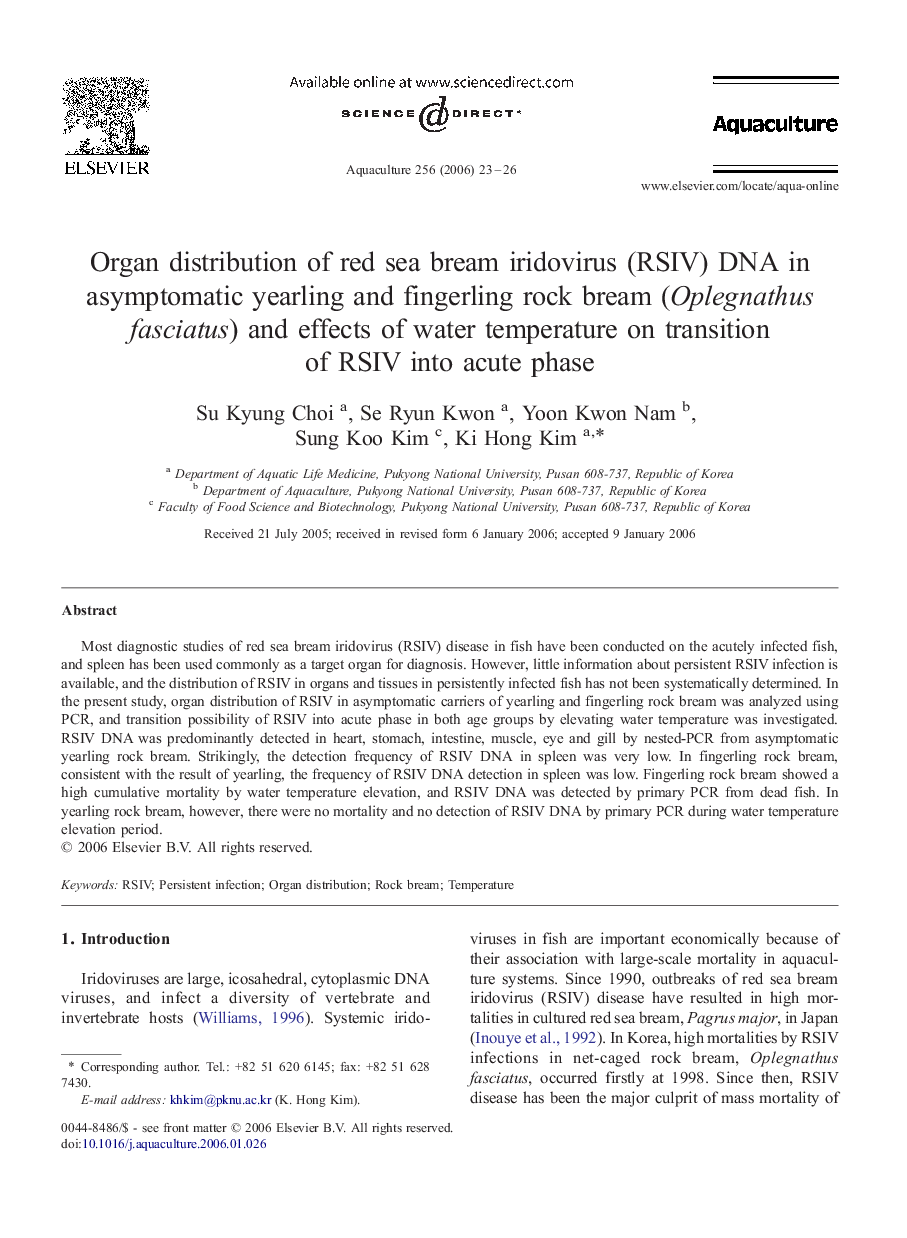| Article ID | Journal | Published Year | Pages | File Type |
|---|---|---|---|---|
| 2425899 | Aquaculture | 2006 | 4 Pages |
Most diagnostic studies of red sea bream iridovirus (RSIV) disease in fish have been conducted on the acutely infected fish, and spleen has been used commonly as a target organ for diagnosis. However, little information about persistent RSIV infection is available, and the distribution of RSIV in organs and tissues in persistently infected fish has not been systematically determined. In the present study, organ distribution of RSIV in asymptomatic carriers of yearling and fingerling rock bream was analyzed using PCR, and transition possibility of RSIV into acute phase in both age groups by elevating water temperature was investigated. RSIV DNA was predominantly detected in heart, stomach, intestine, muscle, eye and gill by nested-PCR from asymptomatic yearling rock bream. Strikingly, the detection frequency of RSIV DNA in spleen was very low. In fingerling rock bream, consistent with the result of yearling, the frequency of RSIV DNA detection in spleen was low. Fingerling rock bream showed a high cumulative mortality by water temperature elevation, and RSIV DNA was detected by primary PCR from dead fish. In yearling rock bream, however, there were no mortality and no detection of RSIV DNA by primary PCR during water temperature elevation period.
